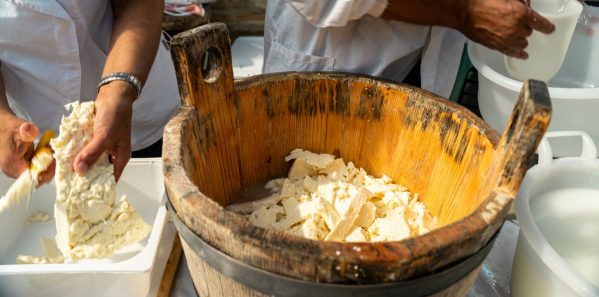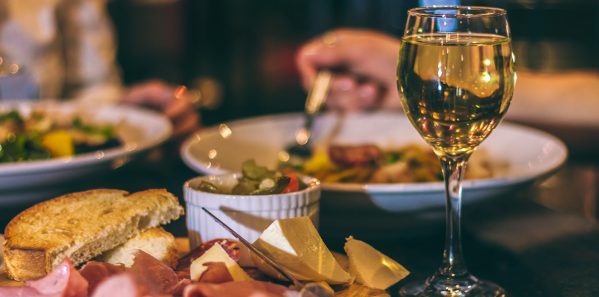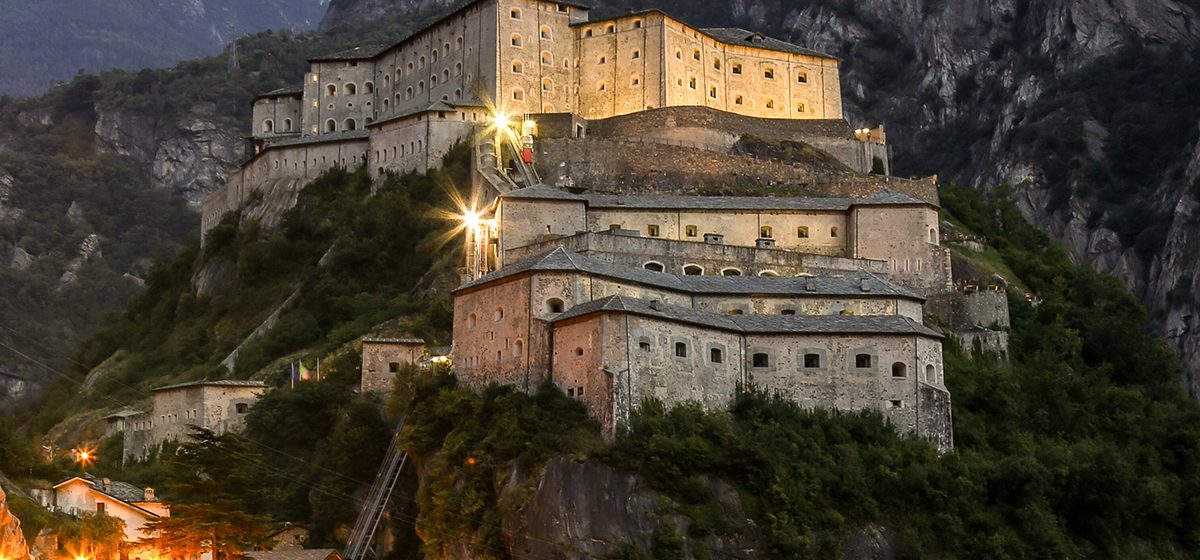The promise of new flavors and aromas — the kind that seep into your clothing as much as your memory — have long beckoned travelers whose craving for wanderlust is matched only by their craving for authentic dishes. And there’s simply no better place in the world to combine culture and cuisine than Italy and the Aosta Valley.
Situated in the Western Alps of northern Italy, the Valle d’Aosta is bordered by France and Switzerland and set against the snow-capped backdrops of the Matterhorn, Mont Blanc, Monte Rosa, and Gran Paradiso. The entire region is dotted with medieval castles and fortresses, so it’s not surprising that food from the Aosta Valley combines centuries of tradition with influences from Italian, French, and Swiss culture. Local fare is best described as rustic, hearty, and flavorful — much like the people who call this region home.
The iconic peaks that surround the valley are credited with producing some of the world’s most delectable cheeses. Cows graze in mountain pastures, munching on natural grasses and drinking from the purest alpine streams — an idyllic setting that results in savory fontina, fromadzo, toma di Gressoney, reblec, and salignön cheeses.
The region is also famed for its charcuterie products. Any tasting tour is sure to include a variety of local meats, spices, sauces, jams, and black bread — a local specialty. Made mainly from rye flour, the bread’s dark color, hard crust, and slightly sour taste is unforgettable.
While etiquette suggests dessert should be served before fruit, Valle d’Aosta’s local gastronomic culture blends the two with its legendary tegole valdostane. Made with simple ingredients — dried fruit, almonds, and hazelnuts — these biscuits are a local specialty.
Of course, no tasting tour of Italy is complete without sampling the region’s wine. Numerous vineyards dot the Valle d’Aosta, which receives steady rainfall, constant ventilation, and temperature variations of up to 30 degrees Fahrenheit between sunrise and sunset. The climate means the grapes ripen quickly and develop unique aromas, best observed while sipping a Blanc de Morgex et de La Salle, a dry white wine with a hint of high-altitude herbs, or a velvety Chambave Muscat, a red wine often served between meals. A number of vineyard and cellar tours are available throughout the region. The same alpine microclimate responsible for the award-winning wines also helps produce a handful of medicinal herbs that not only flavor local dishes but are also known for their therapeutic properties. Cheers!



